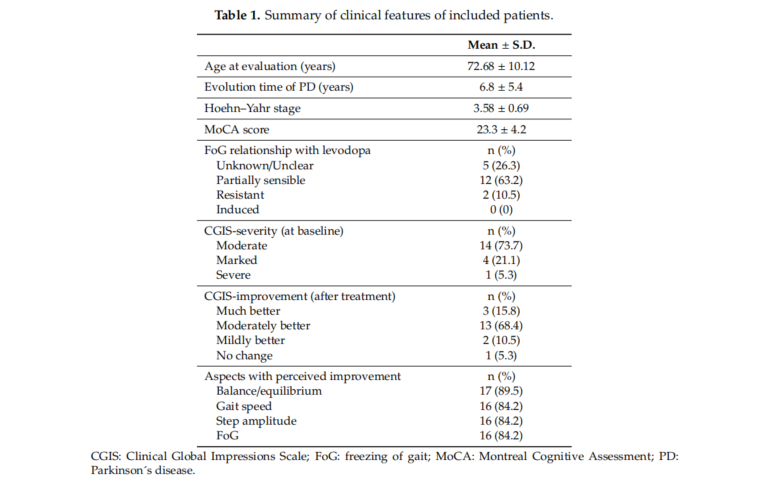Background: Parkinson’s disease (PD) is a neurodegenerative disorder characterized by motor impairment. Freezing of gait, impaired mobility and falls are common problems in these patients.
We aimed to evaluate the effect of a novel therapy for these patients.
Methods: We studied patients with moderate to severe freezing of gait who underwent anti-gravity treadmill training twice a week for 4 consecutive weeks with 50% reduction of body weight.
Article cited in:Brain Sci. 2020, 10, 739;
Article link:https://doi.org/10.3390/brainsci10100739
Parkinson’s disease (PD) is a neurodegenerative disorder characterized by the presence of bradykinesia, muscle rigidity, tremor and abnormal postural reflex . A substantial proportion of patients with PD have balance problems and freezing of gait has been reported in 47% of cases . FoG is defined as “brief, episodic absence or marked reduction of forward progression of the feet despite the intention to walk” and typically occurs on initiating gait or on turning while walking . Several therapeutic approaches have been employed in clinical studies and medical practice in order to improve FoG, including: pharmacological therapy; brain, spinal cord and vagus nerve stimulation; and physiotherapeutic approaches using wearable cueing devices, anti-gravity treadmill training, walk-bicycle, or obstacle aquatic training with variable clinical benefit .
In this study, we aimed to assess whether training with an anti-gravity treadmill can improve FoG and mobility in patients with PD. The anti-gravity treadmill technique was developed by the National Aeronautics and Space Administration (NASA) as a method for astronauts to maintain conditioning in space.

Conclusions :We present the effect of a novel rehabilitation therapy with an anti-gravity treadmill showing improvement in FoG and mobility in patients with PD. Further studies should clarify how the anti-gravity treadmill effect improves gait in PD and better define the training variables that can provide the maximal clinical benefit, as this therapy is quite easy and practical to apply for clinicians and rehabilitation technicians with acceptable compliance by patients with low risk of side effects.
Results: We enrolled 26 consecutive patients with PD, 19 completed the study. There were 10 males; mean age at evaluation was 72.7 ± 10.1 years. Compared to baseline, patients showed improvement in the Freezing of Gait Questionnaire. Moderate or significant improvement in gait was reported by 84% of patients. Anti-gravity treadmill training improved freezing of gait and mobility in patients with PD.